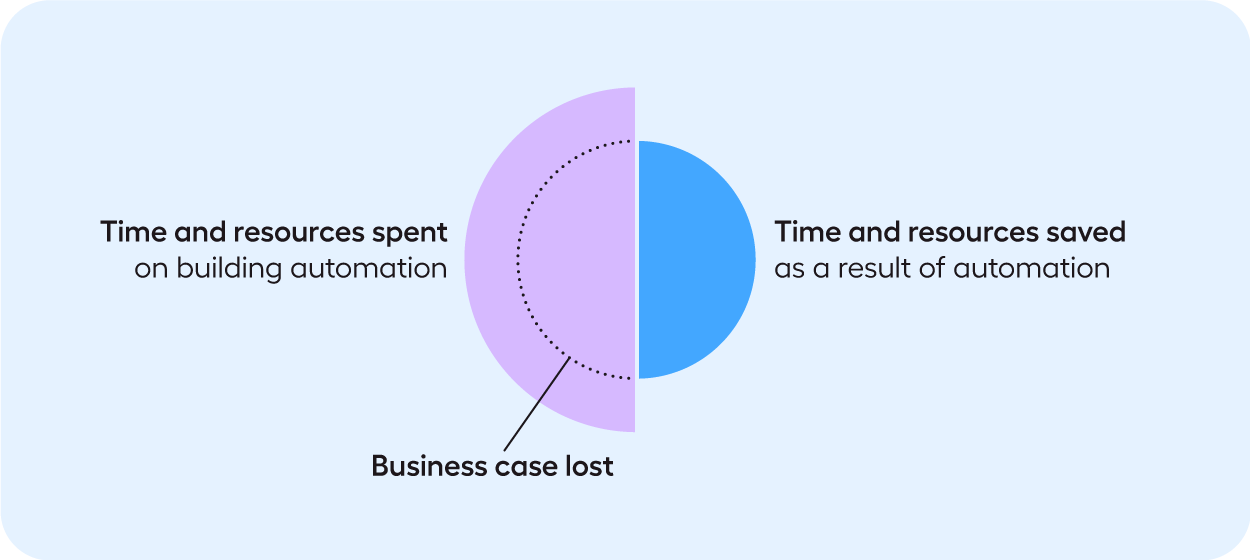How Many Days Does It Take To Learn Test Automation?
Agile development practices and digital transformation are top of mind - and with their acceleration comes a growing need for higher quality software and software testing. As a result, a light has been shone on test automation as a way to accelerate agile development. But long onboarding time and heavy maintenance are slowing progress and leaving businesses prone to risk.
In this article, we’ll highlight how long you can expect it to take to learn how to use code-based (Selenium), low-code and visual test automation solutions.
Skip ahead to:
Is automation testing hard to learn?
How fast can you learn automation testing?
How long it takes to learn Selenium
How long it takes to learn low-code test automation
How long it takes to learn visual test automation
How long it takes to learn visual test automation
Is automated testing hard to learn?
In most cases, yes. Test automation is hard to learn.
The test automation learning curve can be really steep. The maintenance will be very high, especially with regular software changes that impact the robustness of your test cases. And many of the tools are built by developers, for developers, making it difficult for non-technical testers to get up to speed quickly.
How fast can you learn automated testing?
Test automation is supposed to help businesses become more productive and assure quality of their software under test. There’s just one problem. Test automation isn’t always quick to learn and implement.
Code-based test automation can take up to 12 months. And businesses aren’t necessarily able to dedicate months for their responsible teams to learn test automation. They need results, fast.
But it’s not all bad news. Not all test automation takes months or years to learn.
How long it takes to learn Selenium
The learning curve for Selenium automation testing varies greatly depending on your development experience.
If you have a good grasp of Java, Python or C#, it shouldn’t take more than a few weeks to build functional test automation cases.
The time consuming element of using Selenium is the test maintenance. If your system undergoes many changes, you will have to recode your test cases impacted by the change every time. Your Selenium tests can quickly become obsolete before you even put the scripts to work.
For testers and QA personnel without programming skills, the learning curve is much steeper. It can take several months, sometimes years to learn. While it’s very powerful, Selenium is not recommended if you’re lacking the right resources for the tool (i.e. programming skills).

Image: sometimes the time and resources it takes to build and maintain test automation outweighs the benefit of adopting a solution.
Take JFHillebrand, a logistics and shipping services company, as an example. In the past, they adopted Selenium, and quickly faced issues. Because they didn’t have the development resources in house, they relied on Google to find code examples to get Selenium to work.
Even so, with each sprint they had to rebuild their Selenium scripts from scratch, wasting hundreds of hours. This prompted them to switch their approach, opting for a visual test automation vendor instead. Within three months, they fully automated their regression testing.
Learn how JF Hillebrand automated their entire regression suite in three months.
How long it takes to learn low-code test automation
The time it takes to learn a low-code test automation tool depends on what solution you’re using. It can take weeks or months.
Some rely on recorders and pre-built components to do some of the heavy lifting. For simple test cases, this can save time and might not require programming.
Compared to Selenium, they are a more user friendly option. And compared to manual testing, they could make your team more efficient. However, they still require some level of coding to automate more complicated test cases which still makes low-code hard to maintain and scale, and leads to resourcing issues. This can hinder a businesses ability to become successful with low-code options.
How long it takes to learn visual test automation
Visual test automation is a unique and new approach to building test automation. At its core, it aims to make test automation accessible to the people who have to test - QA personnel, business users, and testers. Visual test automation doesn’t require any coding skills at all. Even when you need to drive data or build test cases end to end.
Leapwork is an example of a visual test automation solution that requires zero programming skills and automates across enterprise applications. We do this through a smart recorder, visual building blocks (they work across web, desktop, mobile and legacy apps), and hypervisual software debugging.
Combined, these features make it possible for testers to build tests in minutes, and ramp up test automation in 30 days.
You can learn more about the features behind visual test automation, and how it stacks up against other solutions in this test automation comparison chart. After reading this chart, you’ll be able to confidently assess vendors on:
- The usability and adoption,
- Their integrations,
- The applications supported,
- Their governance, compliance and documentation

